Bonaire
Why Bonaire?
Bonaire officially became the World’s First Blue Destination on October 10, 2018. It was the first Caribbean island to have a marine park that has protected surrounding waters for the past 40 years and considers protection of nature to be a cornerstone of its sustainable tourism policies.
Accommodations
Bonaire is known as a “Divers Paradise.” Most accommodations, ranging from small hotels and resorts featuring apartments and condominiums, are dive-centric with on-site dive operations. Where I’ve stayed: Sand Dollar Condominiums and Captain Don’s Habitat (Bonaire’s first dedicated dive resort).
Activities
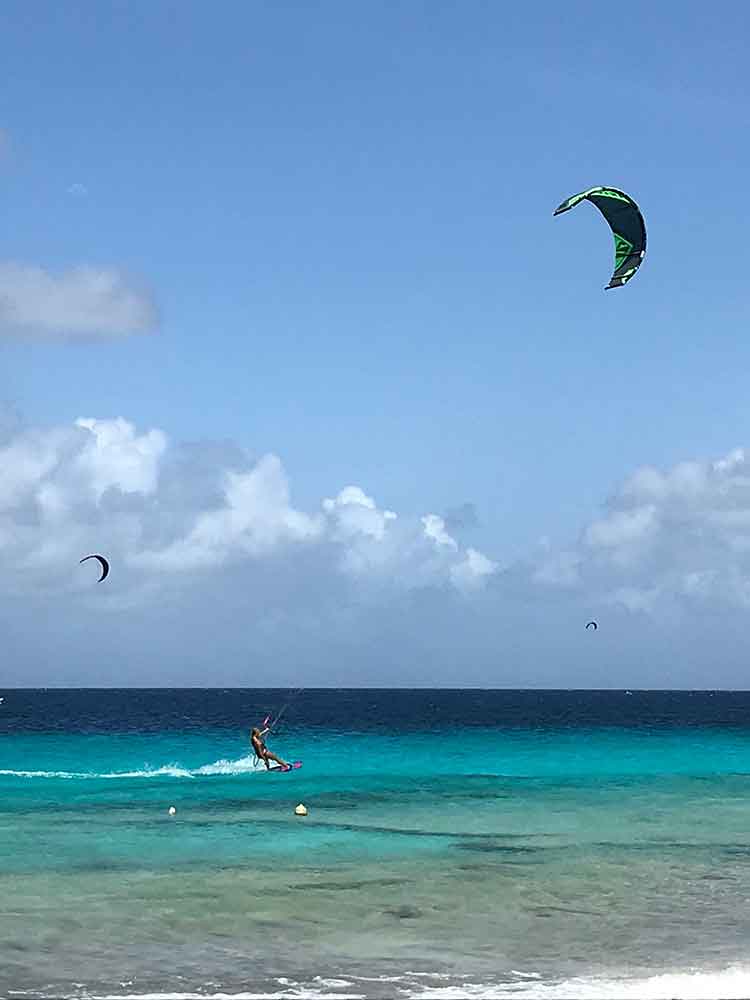
Although most well-known as a scuba destination, kiteboarding is also a popular sport on Bonaire.
Scuba diving (89 official dive sites), snorkeling, kiteboarding, other water sports, hiking and sport fishing. The Bonaire Regatta, a sailing competition, is held each October.
VIDEO: This video should convince you to go to Bonaire for some of the best scuba diving. I’m ready to go back now! Wow!
Beaches
Bonaire has 22 named beaches (including one called No Name Beach on the uninhabited islet of Klein Bonaire) with sand ranging from white to pink to black, fine to coarse, due to finely crushed coral or shells. Bonaire’s rocky coastline is made up of limestone.
Food and Drink
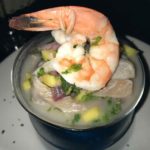 While Bonaire doesn’t have a “national dish,” its varied cuisine is a result of the island’s Dutch roots and cultural diversity. Seafood and fish is naturally a common theme on many restaurant menus, with the most popular dishes including conch shell meat, lobster and grilled spicy fish, in addition to stews and soups. Bonaire’s seawater is distilled and purified to become one of the purest drinking waters in the world.
While Bonaire doesn’t have a “national dish,” its varied cuisine is a result of the island’s Dutch roots and cultural diversity. Seafood and fish is naturally a common theme on many restaurant menus, with the most popular dishes including conch shell meat, lobster and grilled spicy fish, in addition to stews and soups. Bonaire’s seawater is distilled and purified to become one of the purest drinking waters in the world.
Getting There
From USA: American Airlines offers direct flights daily into Bonaire International Airport (BIA), also known as Flamingo Airport, from Miami (MIA). Delta flies direct from Atlanta (ATL); United flies direct from Newark (EWR) and Houston (IAH). From Canada: Sunwing has direct flights from Toronto (YYZ).
Location
Bonaire, a 113-square mile island, is in the southwest corner of the Caribbean, not far from South America, and situated between Saint Vincent and the Grenadines and the twin-island nation of Trinidad and Tobago. Part of the Netherlands for nearly 200 years, Bonaire became an independent province in 2010.
The island lies 30 miles from Curacao, 50 miles north of Venezuela, and 86 miles east of Aruba. It is part of the Leeward Antilles.
It is located outside of the primary Caribbean hurricane belt; its hurricane frequency averages every 28.8 years. Bonaire took a hit from Hurricane Omar during mid-October 2008, which took an unusual southwest to northeast track through the eastern Caribbean Sea.
Vibe
You will feel the “Bon Bini” spirit, which translates to “Welcome” (in the Dutch Caribbean language of Papiamento) wherever you go…
Currency
The official currency is the U.S. dollar. Only U.S. dollars are dispensed at bank ATMs and counters.
Tourism site
If you go, don’t miss:
Don’t miss getting in the water!
Bonaire’s reputation as a diver’s paradise is well-earned, whether you are a novice diver or have years of experience. With 89 official dive sites, including 54 that can be reached from the shore, diving on Bonaire is truly special. The waters surrounding Bonaire, which have been designated a National Marine Park (from the high water mark down to a depth of 200 feet) for the past 40 years, contain more than 350 fish species and nearly 60 types of soft and stony corals. Bonaire officially became the World’s First Blue Destination in 2018.
Visit the Cadushy Distillery or its Tasting Room
Have you ever tasted a cactus? Visit the Cadushy Distillery in Rincon, the island’s second largest city, or, if you can’t make it there, taste the liqueur made from the Cadushy cactus as well as other liqueurs and rums at its downtown tasting room in Kralendijk, Bonaire’s capital. (There are cactus teas and soup, too!)
The Donkey Sanctuary
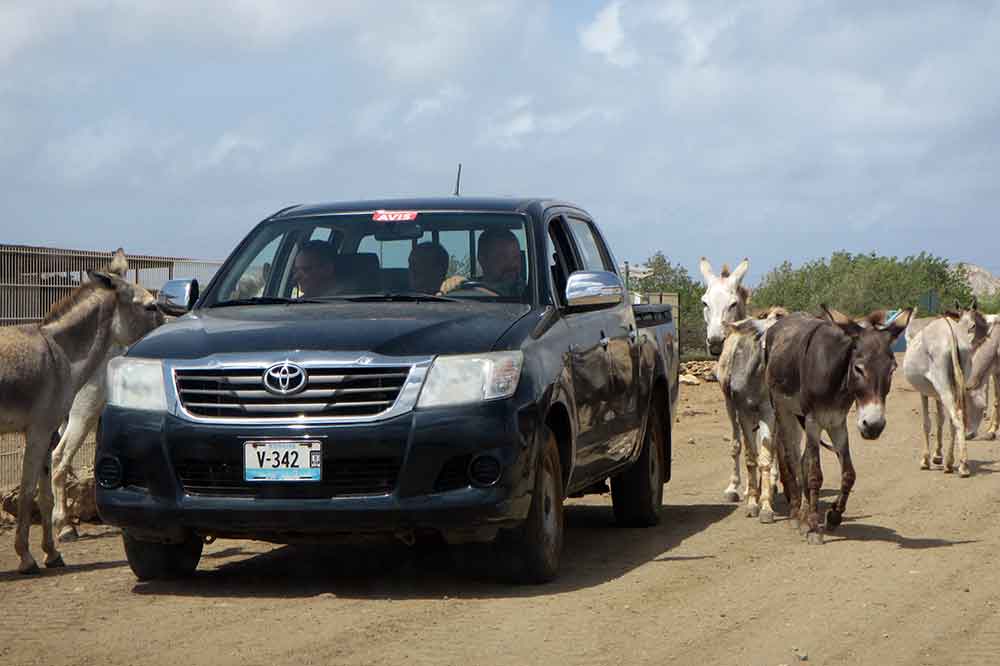
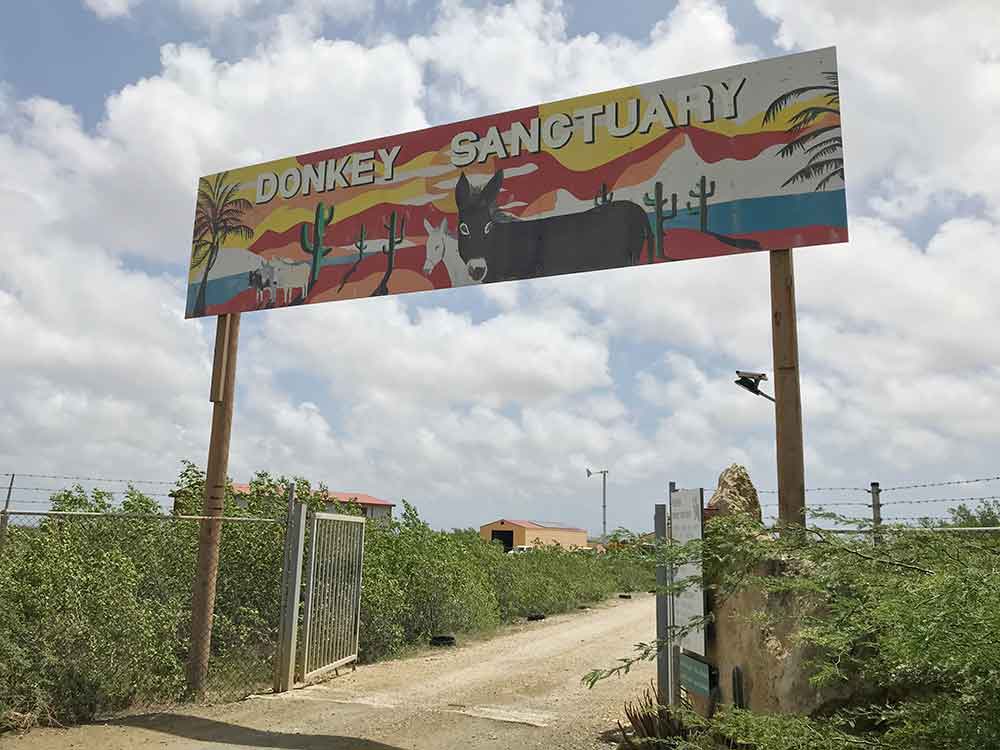
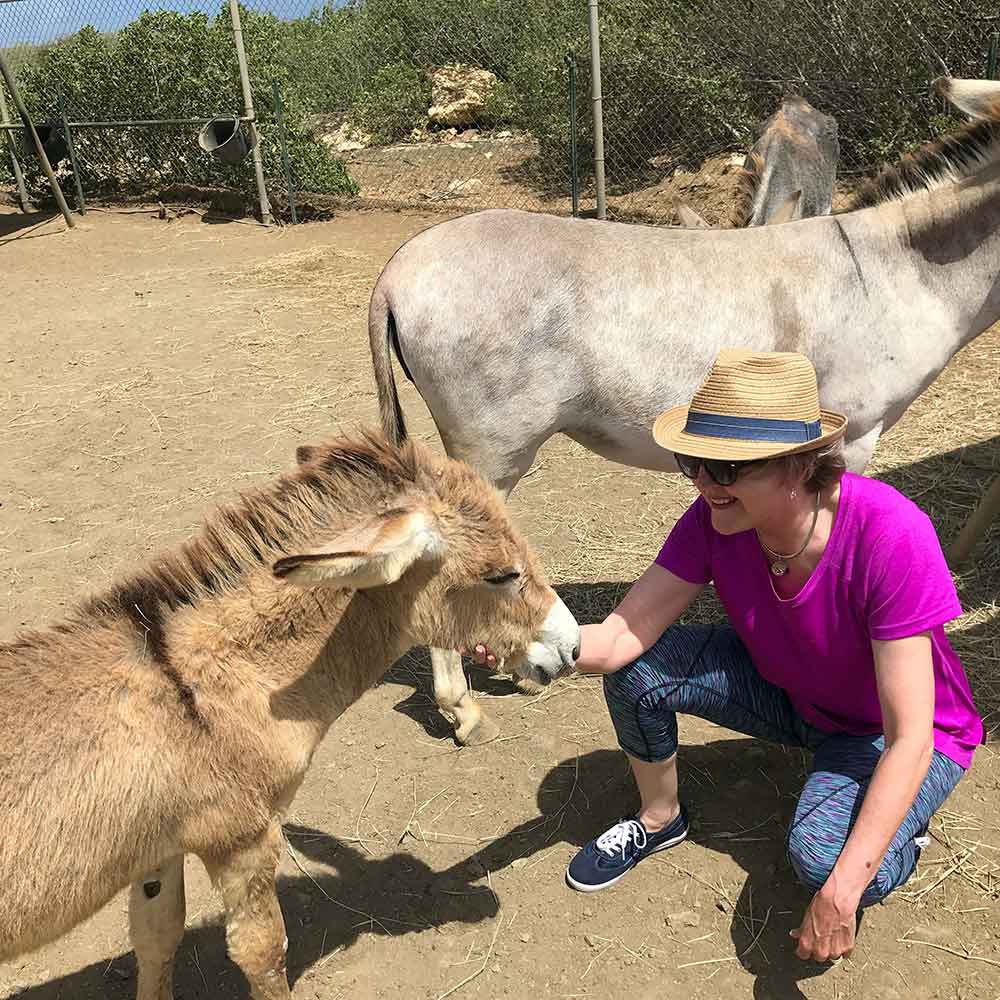
Bonaire’s Donkey Sanctuary was formed in 1993 to provide shelter to most of the island’s wounded and orphaned donkeys. The sanctuary is home to more than 400 animals, which is always increasing. The donkeys are rescued, treated, and are able to live out their years in peace. Open daily 10-5, the entrance fee is $8 adults, $4 children under 12. Carrots can be purchased if you wish to feed the donkeys, which will come right up to your car window to see if you have something for them to eat. Funds raised go back into the upkeep of the facility.
Washington Slagbaai National Park
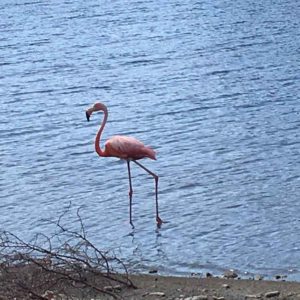
Flamingo, Washington Slagbaai National Park (Credit: Emily Moore)
The Washington Slagbaai National Park is located in the northern end of Bonaire and is the best place for bird-watching (including flamingos), hiking the trails, snorkeling and scuba diving. Drive through the park (take either the short route or the long route, according to your time) and, if you’d like, take a cooler with you to enjoy the beach at Slagbaai.
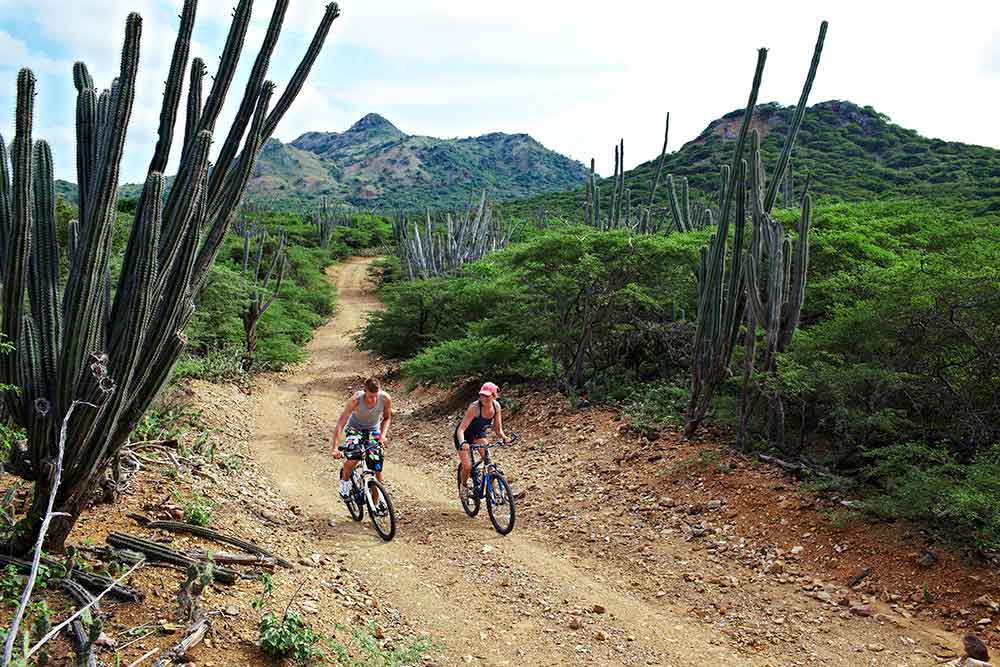
Washington Slagbaai National Park, Bonaire (Credit: Tourism Bonaire)
Drive to Bonaire’s southern end
If you drive the main road to the southern end of Bonaire, you will be sure to see flamingos from a distance. The Pekelmeer Flamingo Sanctuary, located in the vicinity of large salt pans that look a lot like white peaked sand dunes, is home to an estimated 10,000 Caribbean flamingos. Tourists aren’t allowed so bring binoculars or your long zoom lens to see and photograph them.
Salt has been a major commodity on Bonaire for centuries. The Salt Pans (huge mounds of salt crystals) are now the result of Cargill’s Solar Salt Works, which has been producing there since the 1960s.
The Slave Huts, dating back to the 1850s when slaves worked the salt ponds to collect and ship the salt, are also located in this area. They served as sleeping quarters during the week for the workers who walked back to their homes for family time on the weekends.
Bonaire is an easy island to navigate so don’t hesitate to rent a car or truck to explore the island, whether to shore dive or sightsee!
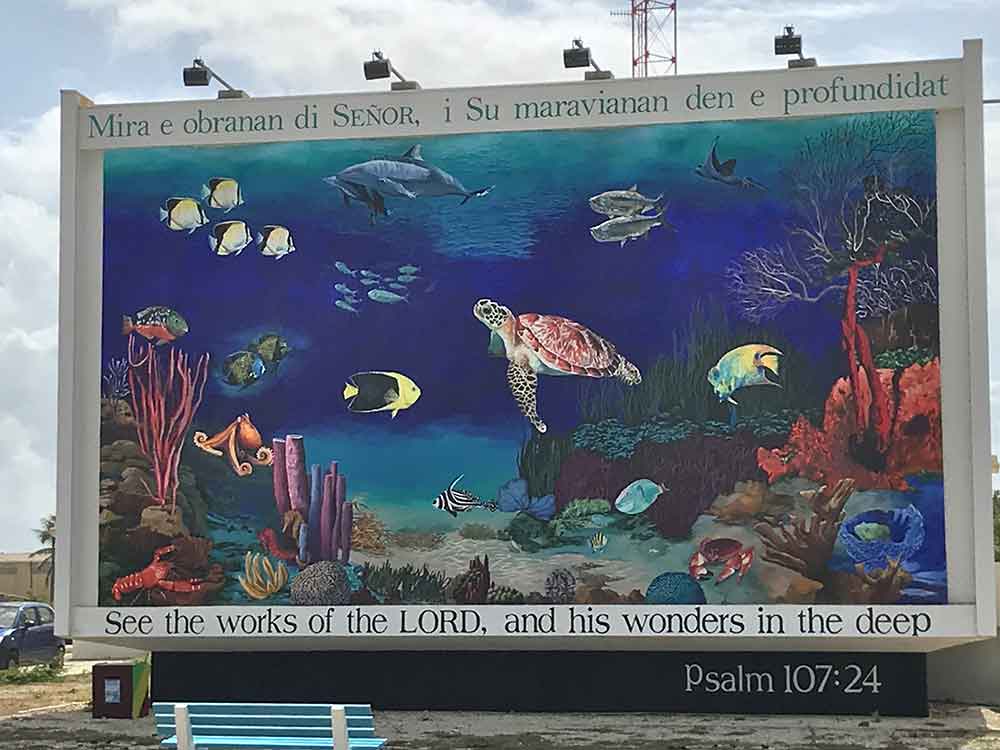
This mural can be seen at one of Bonaire’s main roundabouts.
(Unless otherwise credited, all photos © Debbra Dunning Brouillette.)
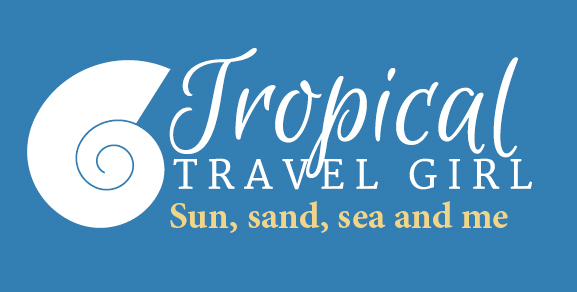

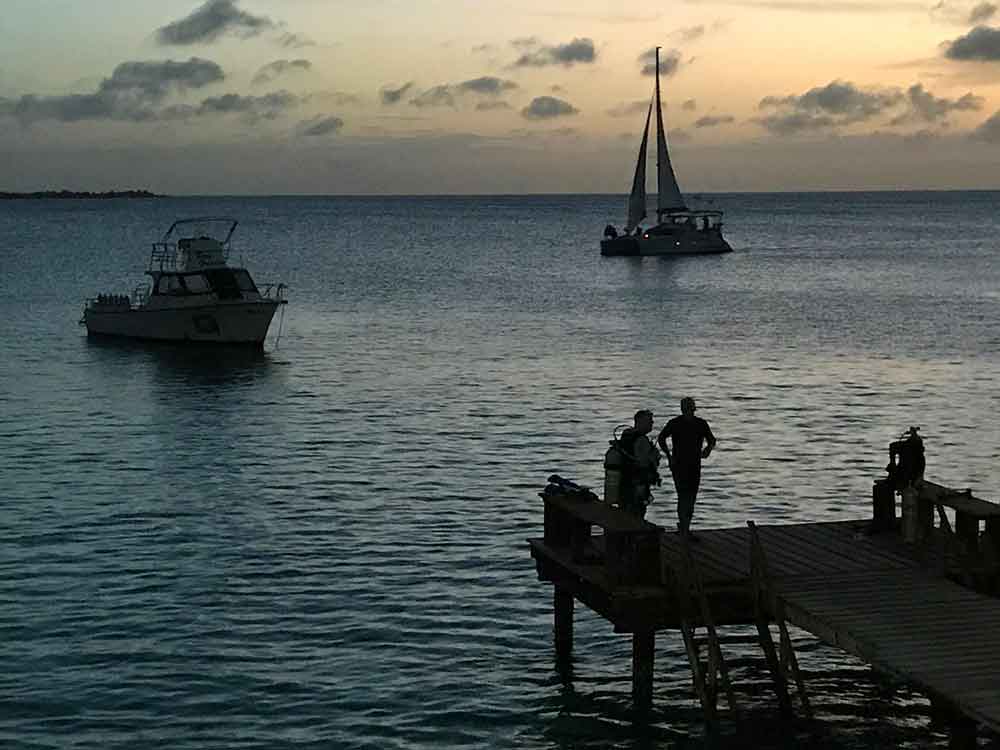
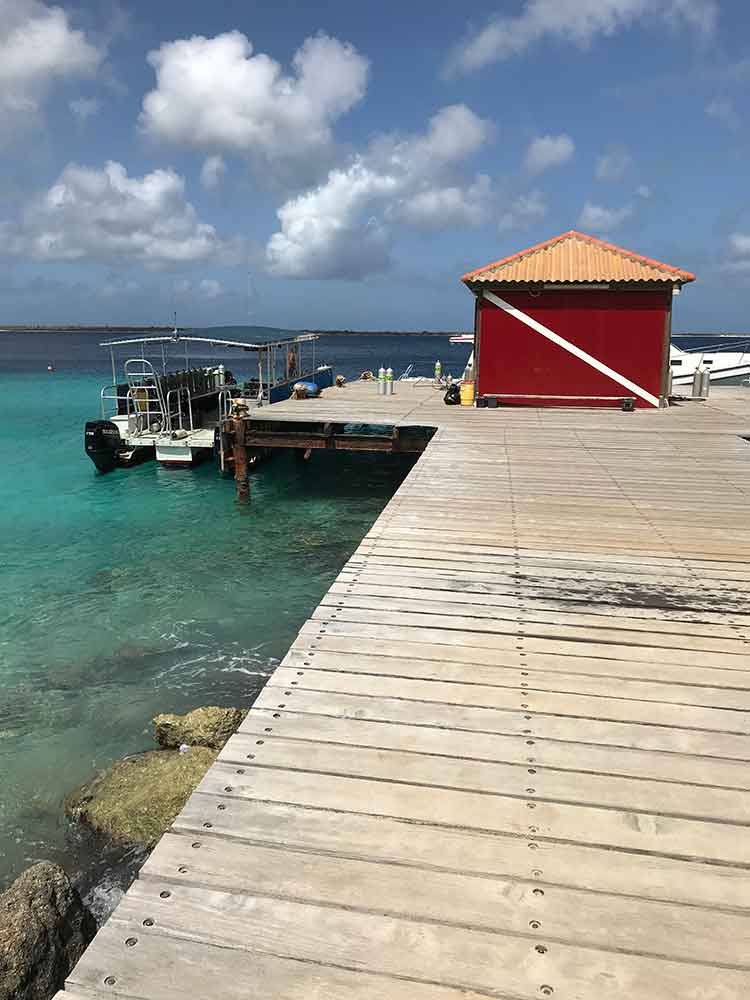
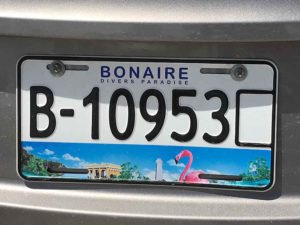

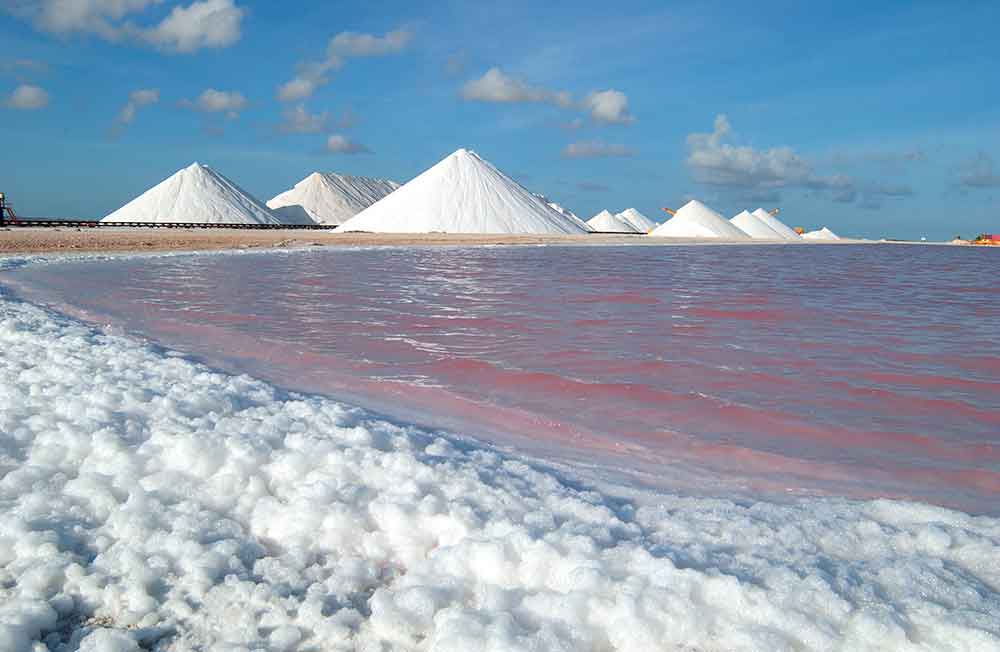
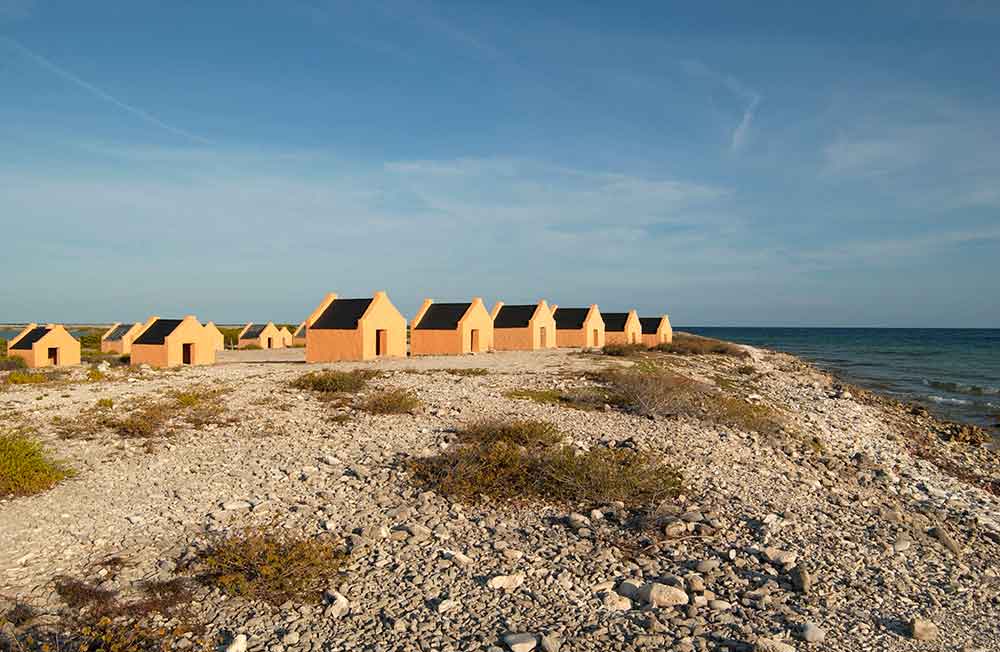
We visited Bonaire as a cruise port. Even with a cruise ship visiting, it seemed like a nice, laid back place. I get claustrophobic even snorkeling, so I’m afraid I’ll have to rely on your lovely underwater photos.
I’m glad you got to visit Bonaire from your cruise ship. I wish I could help you get comfortable with snorkeling! There is so much to see under the sea.
I’ve heard good things about Bonaire and your post has showed me even more! I’d love to go there and visit the Donkey Sanctuary and experience the island vibe.
You would love the Donkey Sanctuary, Doreen! Even if you don’t dive, Bonaire has plenty of things to explore!
The Caribbean never ceases to amaze and surprise me. So much fragile life there. Thanks for the update.
Yes, Kristin, the coral reefs and oceans are in a fragile state but Bonaire has managed to keep its waters protected for decades now! It’s a special place for those who like to explore the underwater world.
Didn’t know that Bonaire offered so much beyond its reputation as a dive destination. We’re always up for a new cuisine, the ocean, and a liquor made from cactus?? Great article, thanks.
We have been there 4 times and going back one more in february. Can’t wait, I love the island and the people. I just don’t want to see it spoiled.
February should be a great time to return to Bonaire, Barbara. I don’t think it is being overdeveloped so, hopefully, it will stay unspoiled for years to come. It IS truly a diver’s paradise…
Pingback: How I display my sand collection and shells - Tropical Travel Girl